I’ve led many photography trips to Africa, and for wildlife, it’s hard to beat the Serengeti. It’s relatively easy to get to, safe, good lodges and teeming with animals. But a few years ago, I started to hear more about Namibia, and what appealed to me was what it had in addition to great wildlife. I’ve recently returned from my first trip there (taking another group next year), and it was everything I’d hoped for. Here’s a quick breakdown, with some photos:
What was great:
- The Quiver tree almost always grows alone, but for some unknown reason there’s a small forest of those trees in Namibia where over two hundred grow in close proximity. We spent a night at the lodge there and visited the trees both our first evening and the next morning. As a bonus, we also had a chance to get up close and personal with some cheetahs. The man who owns the forest has an area where he keeps ones that have been rescued. Farmers there will kill cheetahs if they prey on livestock.

This was from our early-morning shoot in the Quiver Tree Forest. I set a small flashlight off to the right to sidelight the tree and some of the rocks. Nikon Z7, Manual exposure, ISO 125, f/2.2 at 4-seconds, Nikkor 20mm 1.8 lens.
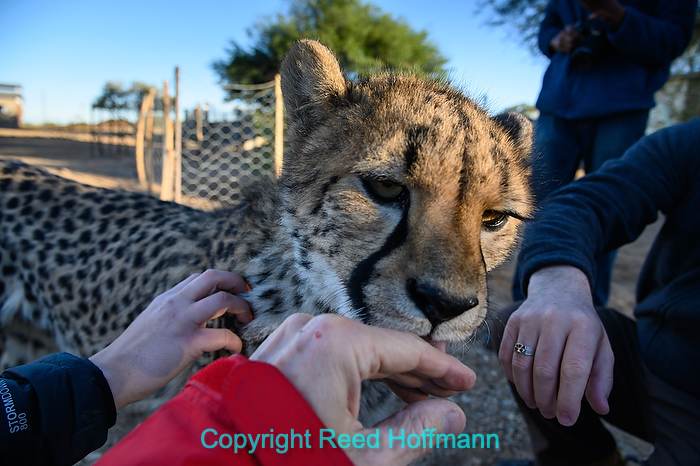
I hope this is the only time I’m actually taking pictures while a cheetah is tasting me. Nikon Z7, Aperture Priority, ISO 400, 1/640 at f/5, -0.7 EV, Nikkor 24-120mm lens at 24mm.
- Kolmanskop is an old mining town that was abandoned decades ago and is being reclaimed by the desert. Also known as Kohlsmankoope or Kohlmanskop, it’s normally open in the morning, and closed in the afternoon. Since we booked a private afternoon tour, we had the ruins to ourseleves for a couple of hours.

Inside one of the abandoned buidlings in the old mining town of Kolmanskop. This is from an HDR sequence of five frames. Nikon Z7, Aperture Priority, f/11, Nikkor 18-35mm lens at 26mm.
- Sossusvlei has some of the largest sand dunes in the world, with colors that run from red to orange because of the high iron content. And there’s a otherworldly area of dead trees (Deadvlei) that have been around for hundreds of years. We spent two mornings there, the first to hike in and photograph Deadvlei, then the second morning to just shoot the dunes in early light.
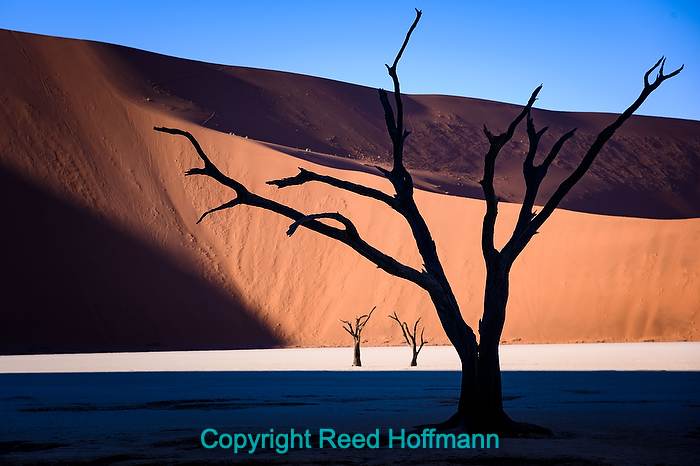
Deadvlei’s dead trees date back hundreds of years ago. The lack of moisture has preserved them for all that time. Nikon Z7, Aperture Priority, ISO 100 f/6.3 at 1/320, EV -.3, Nikkor 24-120mm lens at 120mm.
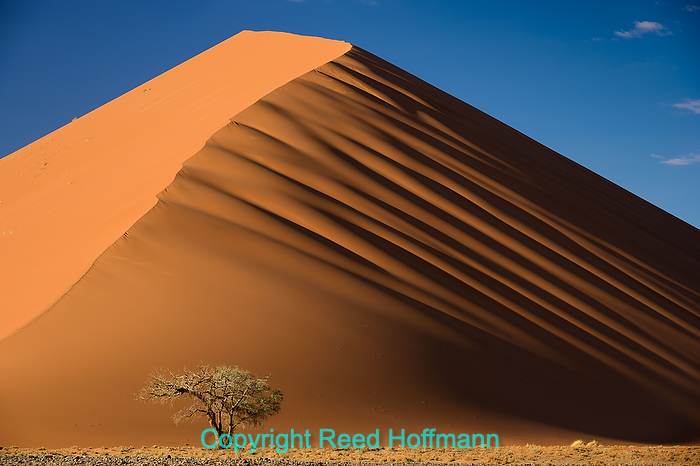
Morning light on the dunes provides not just dramatic shadows, but also enhances their natural color. Nikon Z7, Aperture Priority, ISO 64, f/7.1 at 1/80, EV -.3, Nikkor 24-120mm lens at 98mm.
- The Himba people are very distinctive in both dress and way of life. We had booked an early morning tour of their village, so that we’d have great light and were finished before the day’s heat set in.

The most distinctive feature of the Himba people is their hair. They use a mixture of butterfat and ochre to coat their skin and plait their hair with it as well. The fur tassels at the ends shows that this woman is a mother. Nikon Z7, Aperture Priority, ISO 100, f/2.2 at 1/5000, EV -1.7, Nikkor 50mm 1.8 lens.
- Etosha National Park is one of the best places to see wildlife in west Africa. What makes it unique is the number of waterholes. Morning and afternoon, you’ll find both prey and predators visiting them. We spent the better part of three days there, and not surprisingly, the best photos mostly came from at or near those waterholes.
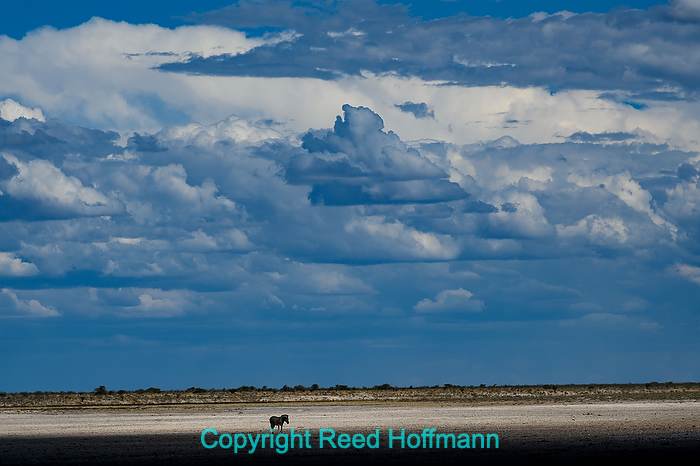
Etosha National Park covers over 8000 square miles, of which nearly 2000 is a salt pan. That gave us some wide open expanses, as well as dramatic cloud formations at times. Nikon Z7, Aperture Priority, ISO 100, f/8 at 1/1000, Nikkor 24-120mm lens at 24mm.
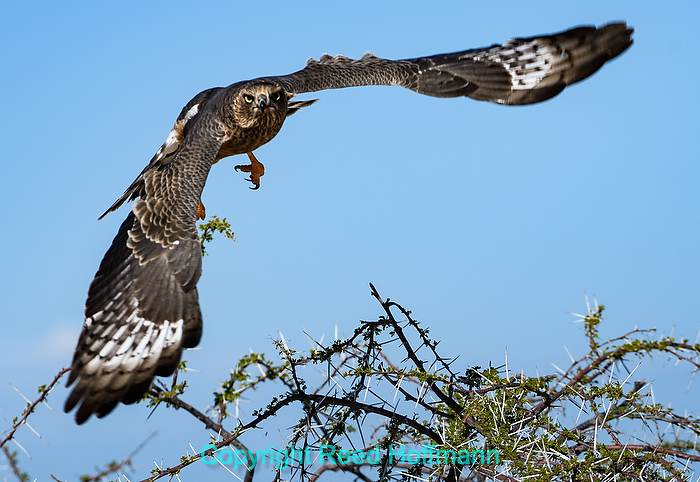
A juvenile Dark Chanting Goshawk launches itself from an Acacia tree. After framing tightly for a few shots, I backed out my zoom lens hoping the bird would fly. I got lucky. Nikon D500, Aperture Priority, ISO 100, 1/1600 at f/5.6, -0.3 EV, Nikkor 200-500mm lens at 220mm.
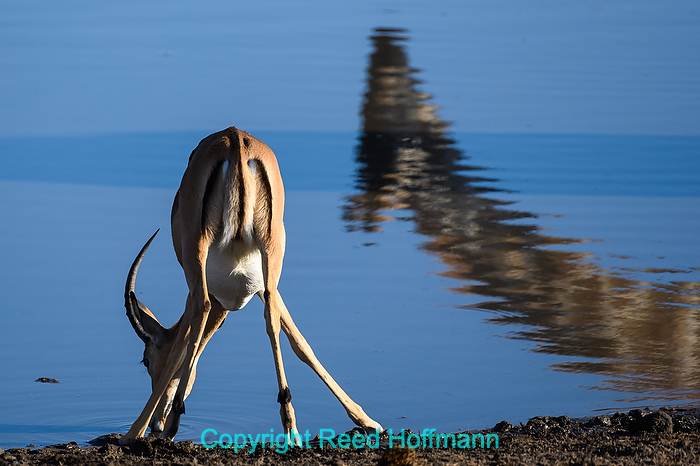
Etosha has lots of waterholes, most natural, a few man-made, and of course that draws the wildlife. At times we also got some great reflections. Nikon Z7, Aperture Priority, ISO 320, f/6.3 at 1/800, EV -.3, Nikkor 200-500mm lens at 500mm.
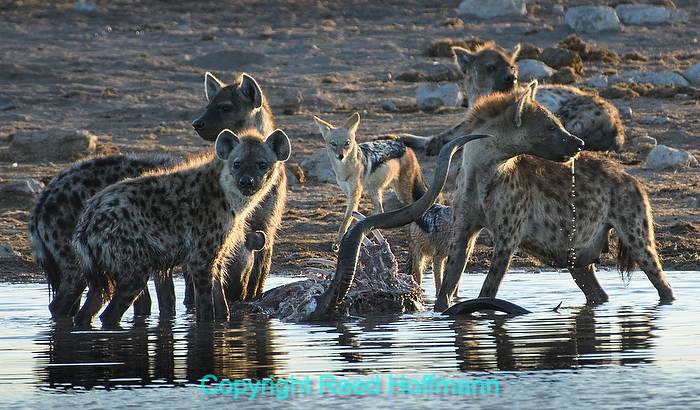
Our first stop one morning was to watch a group of Brown Hyenas feasting on a Kudu they had killed overnight. A few Black-backed Jackals stayed near, hoping for some scraps. Nikon D500, Aperture Priority, IS) 450, f/5.6 at 1/1000, EV +.3, Nikkor 200-500mm lens at 500mm.
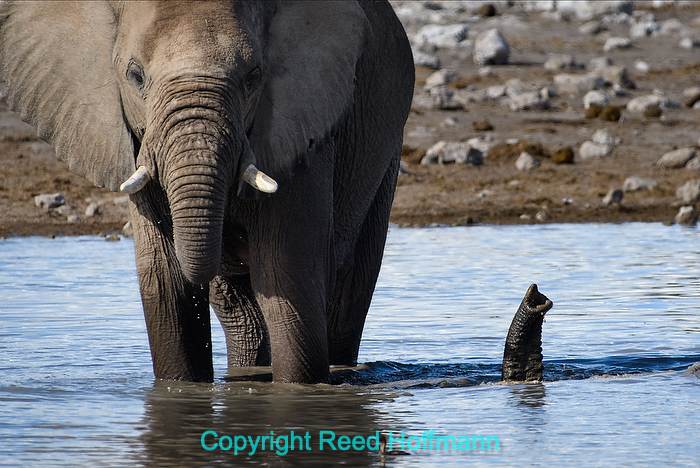
Late one afternoon we were about to leave one of the waterholes when a herd of over 30 elephants came, literally, running in. We spent the better part of an hour photographing them drinking and playing in the water. And yes, they will go completely underwater. That hour was one of my favorite times of the trip. Nikon D500, Aperture Priority, ISO 280, F/6.3 at 1/1250, -.3 EV, Nikkor 200-500mm lens at 500mm.
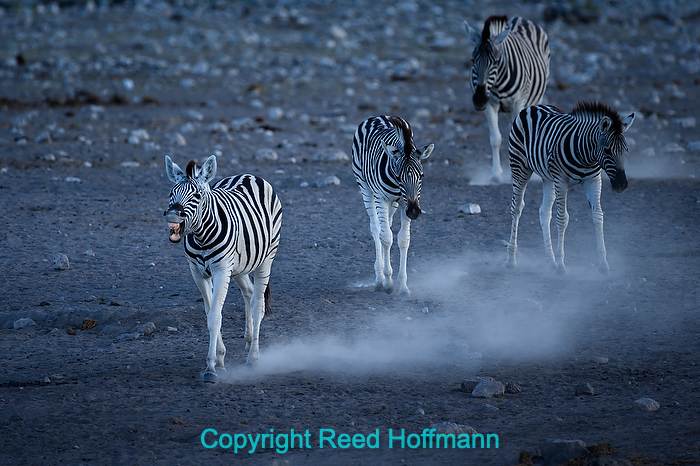
You can clearly see how dry it is as this group of zebras trot in to a waterhole. Nikon Z7, Aperture Priority, ISO 560, f/5.6 at 1/1000, -1.0 EV, Nikkor 200-500mm lens at 500mm.
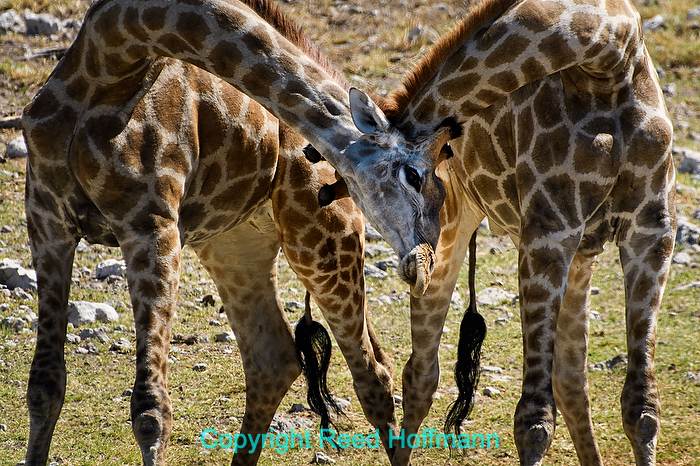
Two separate times we watched a pair of young male giraffes jousting, where they swing their necks to hit the other with their small horns in a contest of dominance. Nikon D500, Aperture Priority, ISO 360, f/6.3 at 1/1000, EV -.3, Nikkor 200-500mm lens at 500mm.
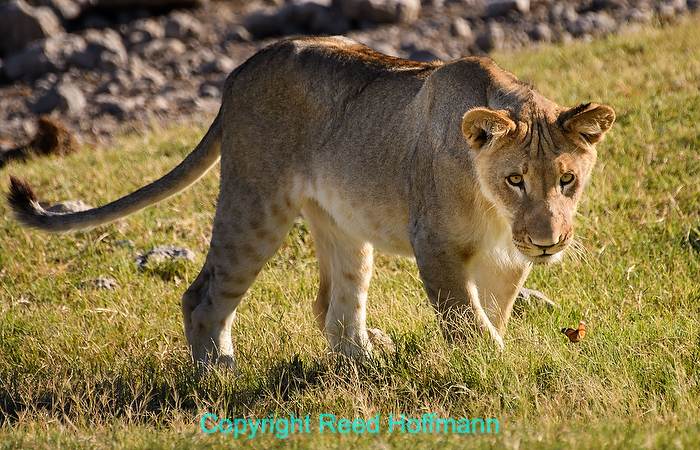
On our final morning, we found a lioness and three cubs at a waterhole. After drinking, this cub decided to chase a butterfly. They’d be cute if they couldn’t kill you! Nikon D500, Aperture Priority, ISO 320, f/5.6 at 1/1250, EV -.3, Nikkor 200-500mm lens at 480mm.
What else was good?
- Good infrastructure. While many of the areas are accessed by gravel roads, they’re well maintained and marked. And the paved roads and towns are in very good condition.
- Almost no bugs. Even in Etosha, we rarely saw any bugs. In fact, over the whole trip, I heard a mosquito at night twice, and only saw one in our truck, which I killed. The guide said this isn’t unusual, there just aren’t many bugs there.
- Every lodge had internet. Maybe not fast, but still, you could stay connected.
- Food and drinks are inexpensive. Snacks, sodas, beer, the occasional meal that wasn’t included are all pretty cheap. I had a very nice multi-course dinner in a beautiful restaurant in Swakopmund, which with drinks and a good tip only cost $27 U.S.
- English is one of the official languages, so communication is easy.
And the not so good:
- We covered a lot of the country, which means most days we spent 4-5 hours riding in the trucks.
- Much of that driving is on gravel roads, which while well maintained are still gravel roads.
- It’s hot and dry.
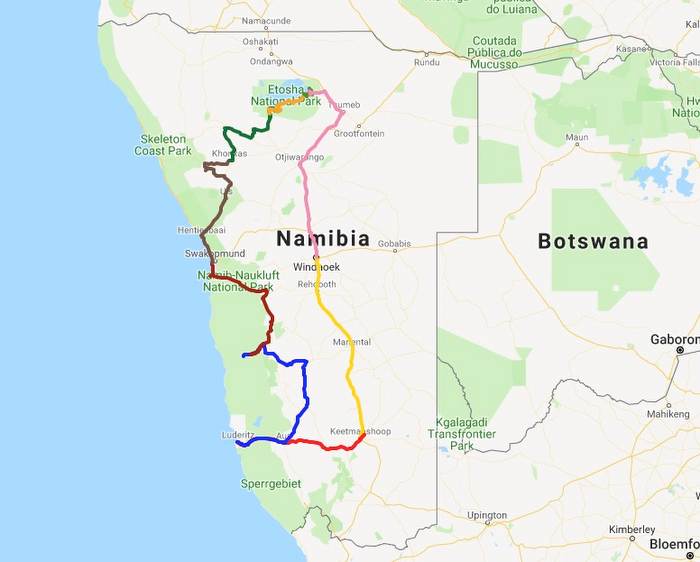
Here’s a map I created of our trip from GPS track logs saved each day on my smartphone. As you can see, we covered a LOT of the country.
On those long, bouncy, hot drives, I reminded myself of the saying, “you have to suffer for your art.” If that’s all the suffering I need to do to get pictures like this, I’m happy to do it anytime. To make the trip any shorter would have meant leaving out one of the signature locations we visited. And after flying halfway across the world to be there, that would have been much worse than a few more hours driving.
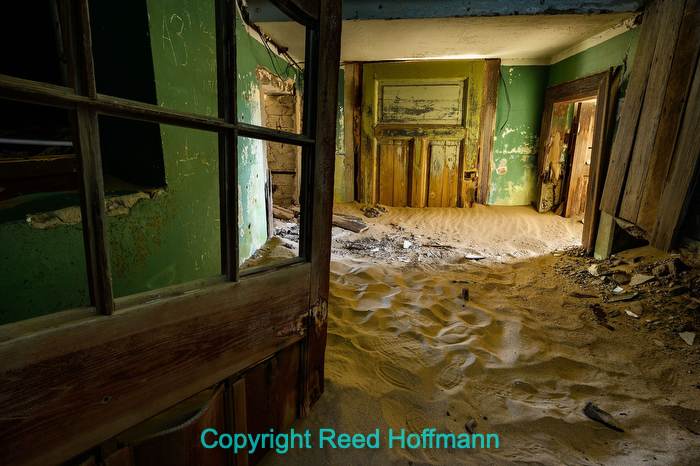
Going down south to Luderitz to visit the ghost town of Kohlmanskoope added a number of hours to our drive time. Was it worth it? Absolutely! Nikon Z7, Aperture Priority, ISO 100, 1/2-second at f/11, -1.3 EV, Nikkor 18-35mm lens at 20mm.
I’m already looking forward to next year’s trip in April, and plan on doing essentially the same itinerary. If you’re interested in joining me on a Namibia trip in the future, email me and I’ll keep you posted as I get the details. As you can see, it’s a great trip.

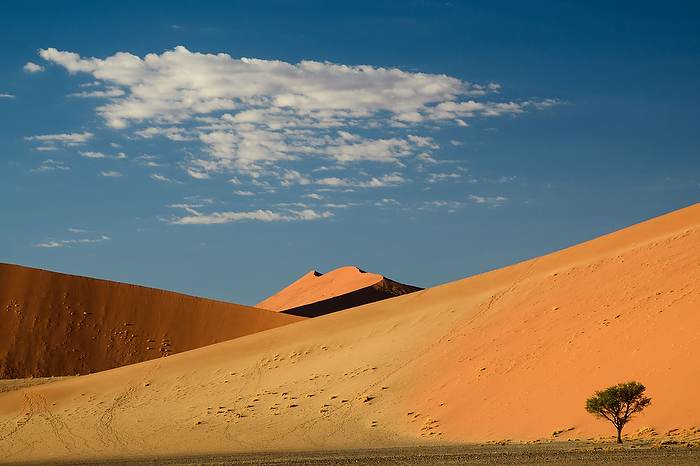
Looks like a wonderful journey. Would appreciate info regarding your next trip there.
Got your email, Bruce, I’ll send you a note about the trip.